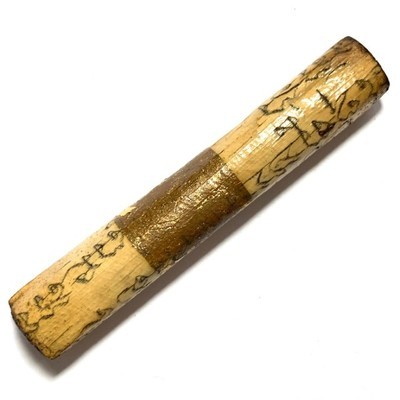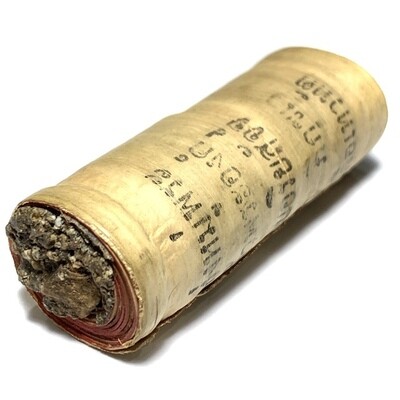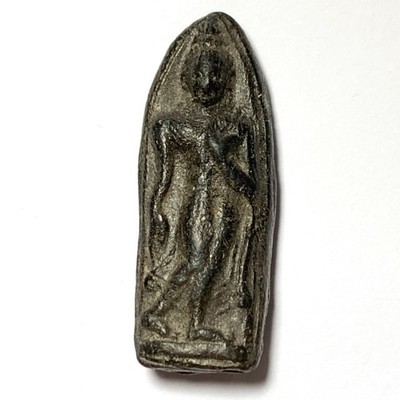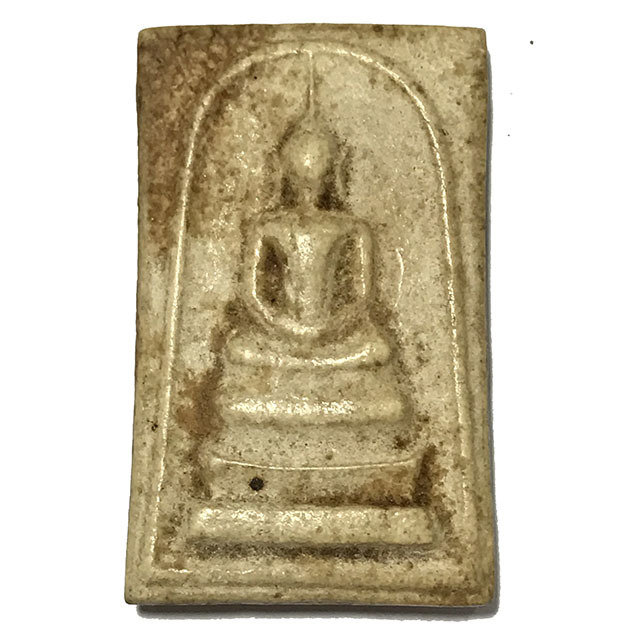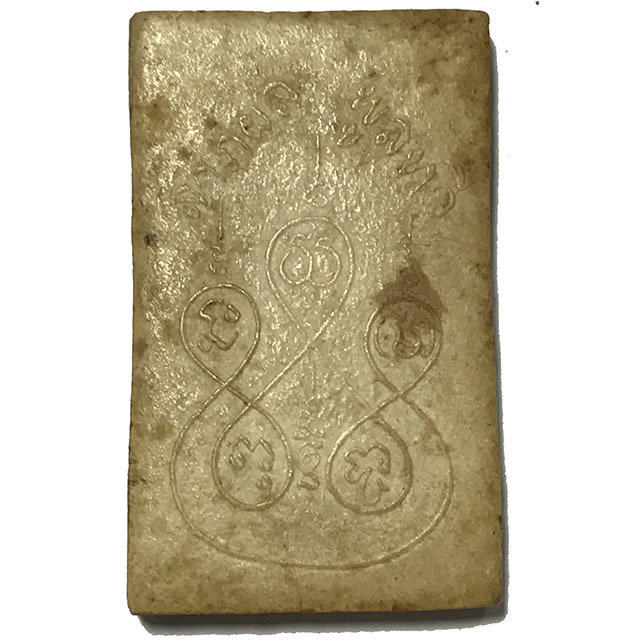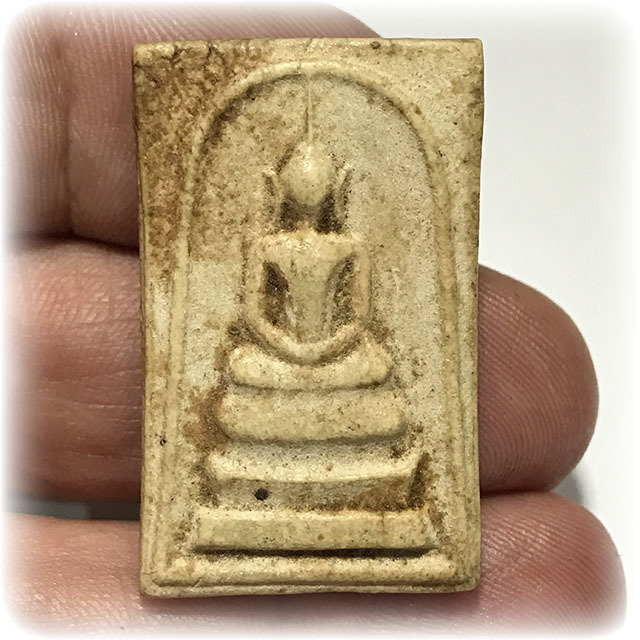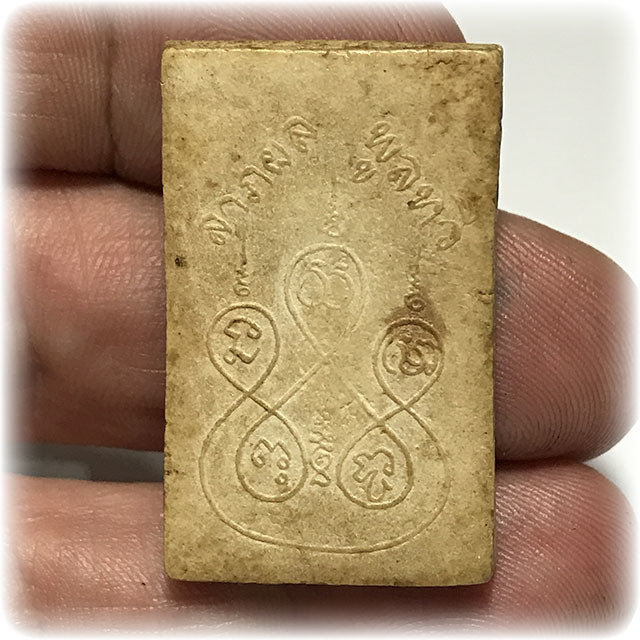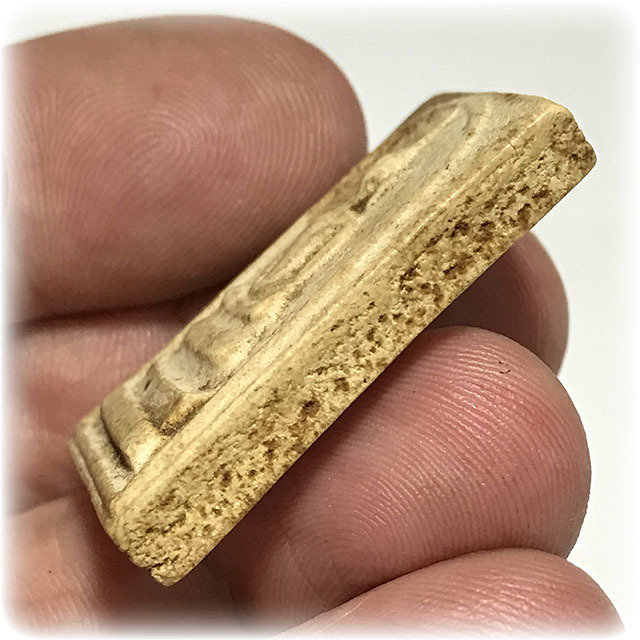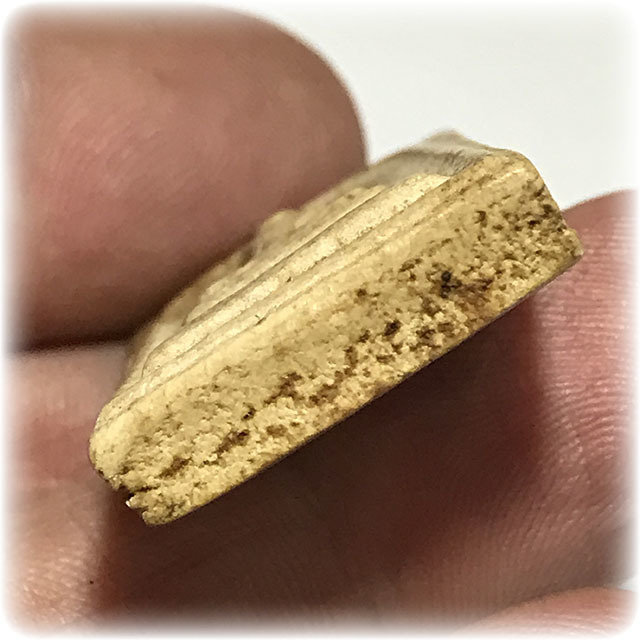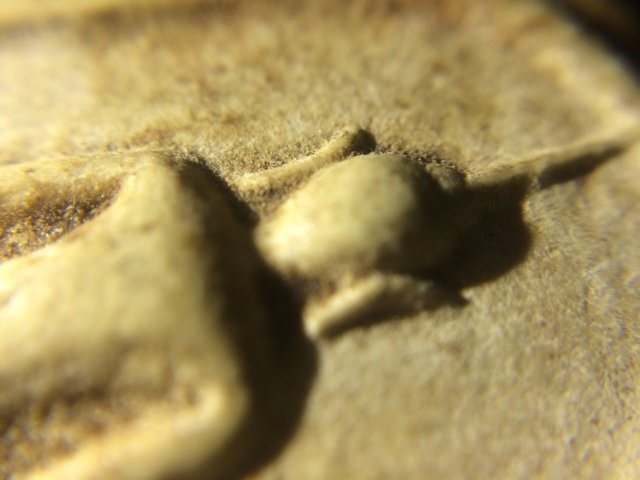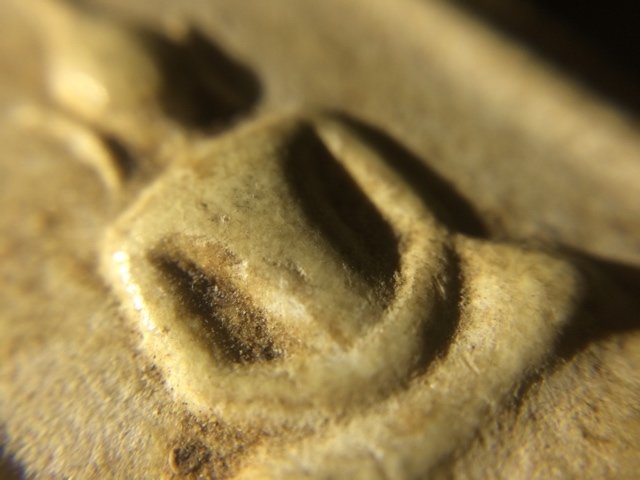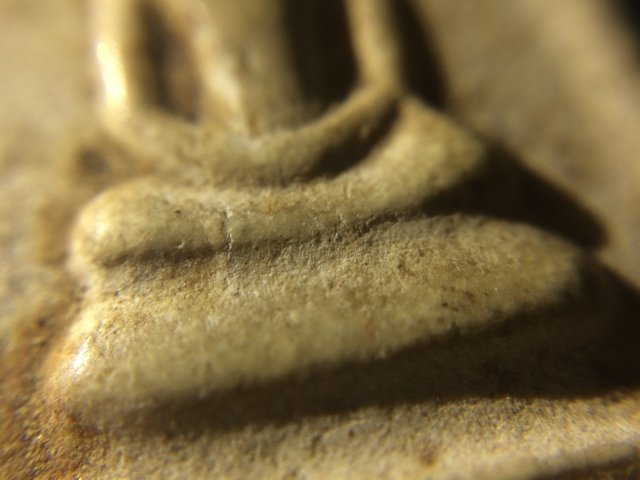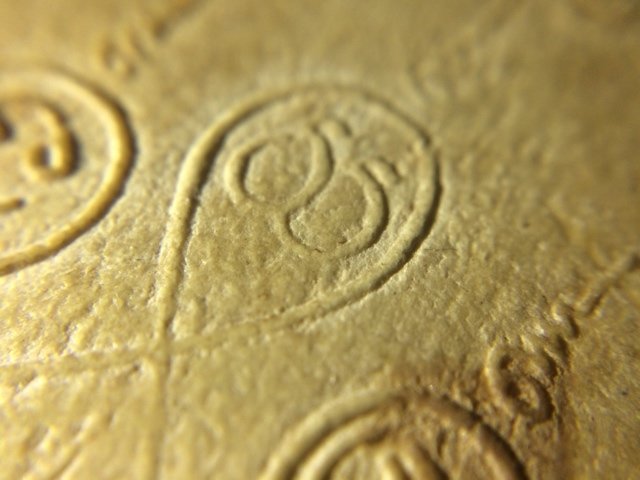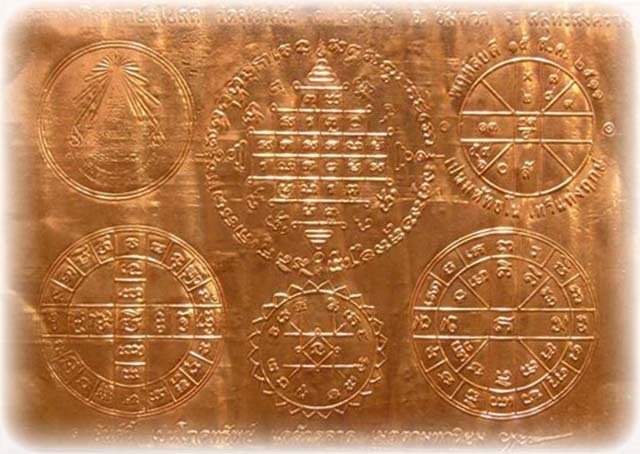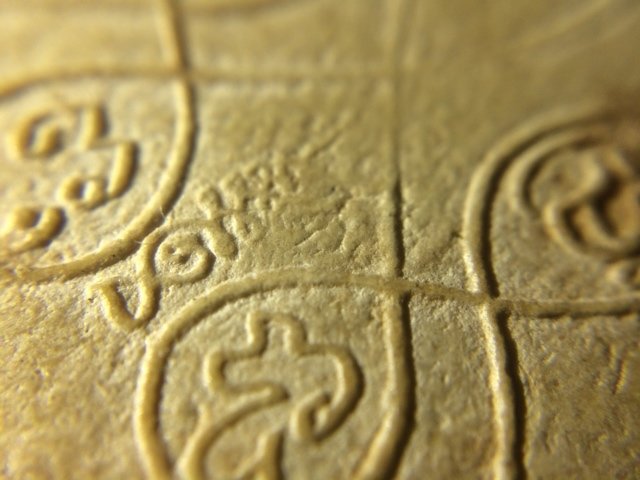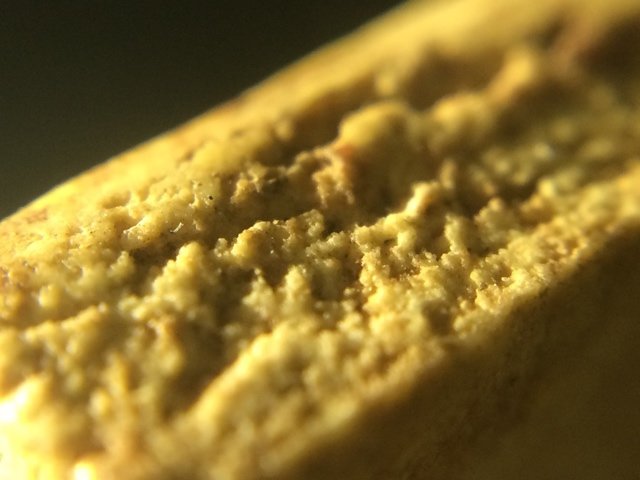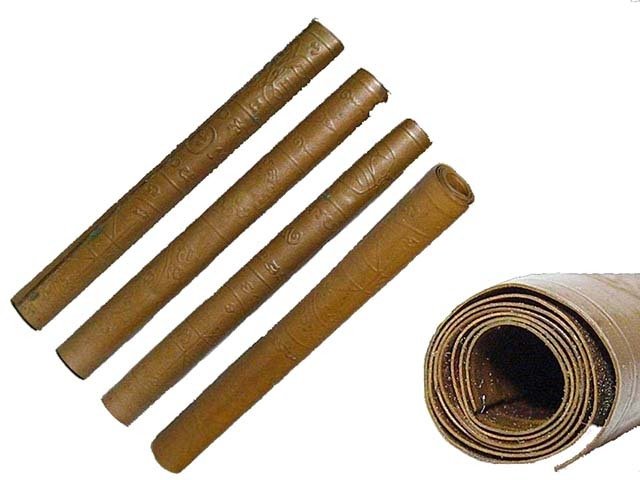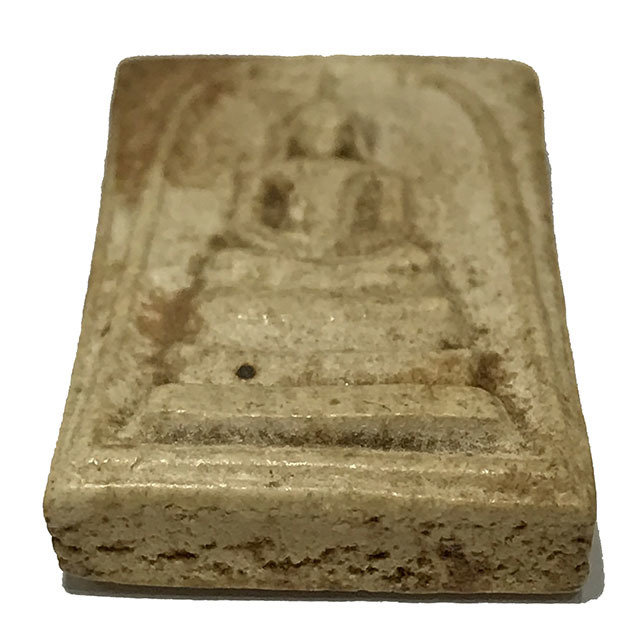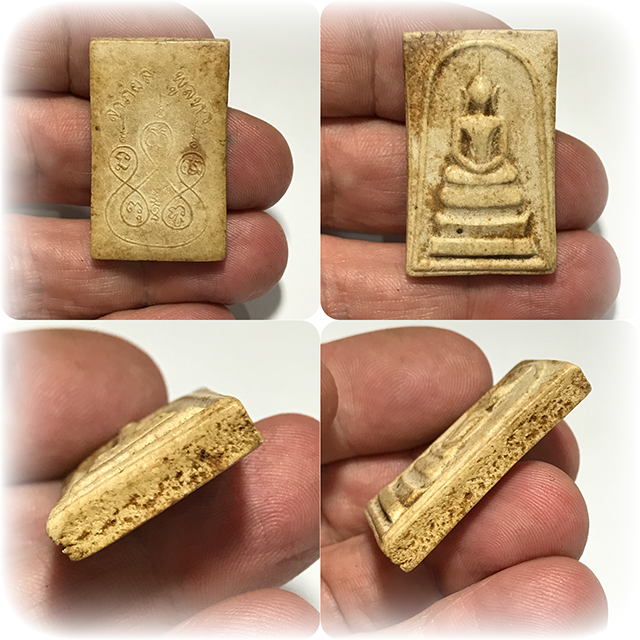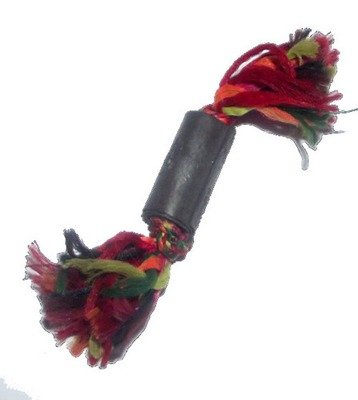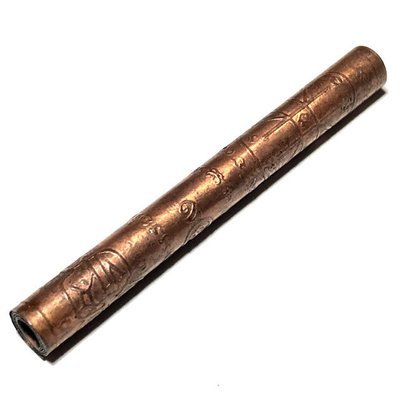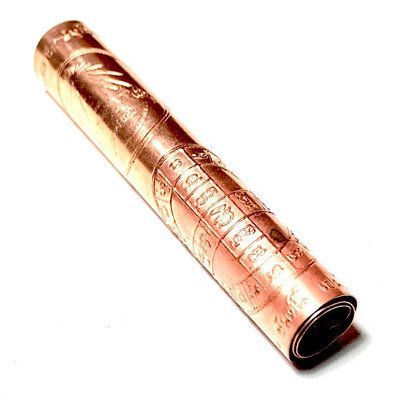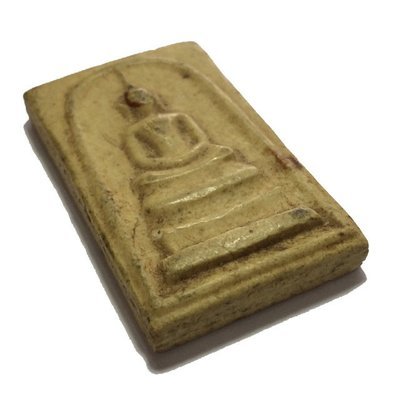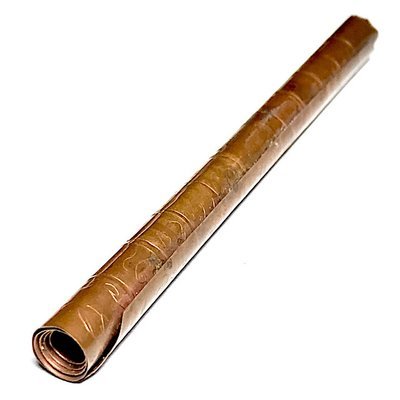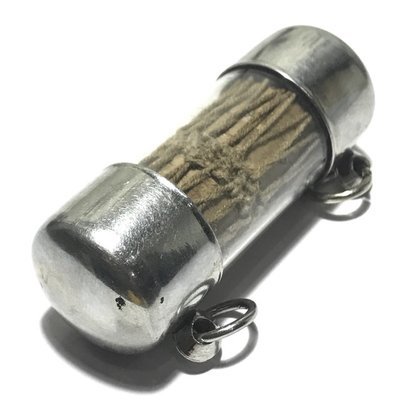A pristinely kept and extremely rare Rian Mangorn Koo Nuea Nava Loha Pim Pised Dtok Sorng Code Ma Wat Pha Nong Lom Run Sao Ha Maha Sethee 5th Lunar Saturday Blessing Ceremony Edition Guru Monk Coin, released in 2543 BE, to raise funds for the Kuti Songk Monks Huts and improve the facilities at the temple of Wat Pha Nong Lom.
This model of Rian Mangorn Koo twin dragons Monk Coin is a very rare Pim Pised (Niyom preferred) and differs from the majority of Rian Mangorn Koo Wat Pha Nong Lom Edition coins in Nava Loha, because of the double code MA stamp. Most coins of the Nava Loha series made for Wat Pha Nong Lom have only a single code Ma Stamp (on the Sangkati chest sash of the robe of Luang Phu), and only the Pim Pised special models received double code stamps. Only very few (unknown number) were distributed with double code stamp, making this not only a sacred, powerful master class amulet, but also a rare collectors piece.
The Rian Mangorn Koo of Luang Phu Hmun is, as are all of his amulets, known for the power of Jaroen Lap Wealth Increasement, and Lucky Fortunes, as well as for their Miraculous Protective Powers. Those born in the year of the dragon love to Bucha this amulet especially, for the obvious reason of the double dragon guardians.
For those with lower budgets, who seek power above collectability and rarity, we recommend to seek the Rian Mangorn Nuea Tong Daeng or Nava Loha single Code Ma, of the same edition, which carries a lower price than this special Nava Loha Pim Pised Gammagarn double code collectors edition model.
Somdej Lap Poon Pon Tawee 2514 BE Nuea Pong Nam Man Luang Por Nueang Wat Jula Mani
Pra Somdej Lap Poon Pon Tawee 2514 BE Votive Tablet in Nuea Pong Nam Man, for Karma Improvement, Protection and Metta (Mercy Charm),from Luang Por Nueang Gowito, of Wat Jula Mani. The amulet in very well preserved condition, with highly refined features, empowered with Luang Por Nueang's famous magic for Improving Horoscope, Wealth Accumulation and Success in all Areas of Life. The front face features a classic and finely honed image of the Buddha on a 3 tiered dais with rounded 'Siarn Badtr' almsbowl shape head, and 'Hoo Bai Sri' curved ears.
The rear face of the amulet has the sacred Yant Nam Tao (Yant Ha) with the Kata Na Mo Put Taa Ya five Dhyani Buddha Invocation within. Above the Yant Nam Tao, are the words 'Lap Poon POn Tawee' meaning 'Increase Luck and Success with Double Results'
Luang Por Nueang Gowito (Pra Kroo Gowit Samutrakun), of Wat Jula Mani, in Tambon Bang Chang, Amphoe Ampawa, in Samutr Songkram Province, was one of the most famous Gaeji Ajarn Guru Monks of his Era. He was the first initiate and apprenticed in magic to Luang Por Kong (Wat Bang Gaporm), Luang Por Chaem (Wat Jula Mani), Luang Phu Jai (Wat Sadej), and many other famous Sorceror Monks of Historical Fame, and received their powerful Wicha in Lineage Transmission. His Wicha was renowned for being manyfold and masterful, having learned from so many different lineage masters. His most famous Yantra and Takrut is the Yant Duang Pra Uposot, which carries legendary status for its power to improve Karma, Protect and Prosper
Luang Por Nueang was very famous for powerful Takrut, and for Wicha Taw Waes Suwan. His most famous Takrut are possibly the Takrut Tone, Takrut Bailan Parchment scroll, and of course his world famous Takrut Yant Duang Pra Uposot. His Takrut Bailan parchment scrolls are legendary in the talismanic amulet scene. Lp Nueang would make his Takrut Bailan using the Wicha of Luang Phu Gaew of Wat Puang Malai, whose Takrut are listed amongst the top Masters of all History.
Luang Por Nuang was born in Praek Hnām Daeng, in Ampawa, Samutr Songkram, with the name Nueang Gao Suwan. He was born on the 14th of February 2452 BE, as the son of Mr. Thom Yā Gao Suwan, and Mrs. Dtāb Gao Suwan. He finished his education in the year 2463 BE in fourth year of primary school. Luang Por Nueang was ordained as a Bhikkhu on the 29th July 2475 BE, with the ceremony being performed within the Uposatha of Wat Bang Gaporm, in Ampawa, Samutr Songkram, with Abbot Luang Por Kong Tamma Dtecho as his Upachaya Ordaining Officer, Luang Por Chaem Solos (Abbot of Wat Jula Mani) as his Gamma wajajarn Prompting Officer, and Pra Ajarn Plong of Wat Bang Gaporm as his Anusawanajarn Witness.
Below; a Historical Photo of Luang Por Nueang, as he performs maintenance of the mortal remains of his Kroo Ba Ajarn, Luang Por Kong, of Wat Bang Gaporm
Luang Por Nueang studied hard and attained his Masters Degree in Dhamma in the year 2479 BE, and in this same time period had also developed immense mastery in Vipassana Kammathana practices, and Puttakom (Buddha Magic). He advanced very rapidlu due to extremely diligent efforts, and putting in his utmost perseverance in both his academic study and his manifest practices. He was also fortunate to have the Great Luang Por Kong of Wat Bang Gaporm as one of his Kroo Ba Ajarn in Buddha Magic, whose Rian Luang Por Kong Coin holds position within the Top Five 'Benjapakee' Monk Coin amulets of all time.
Apart from receiving Wicha from Luang Por Kong, Luang Por Nueang also received Wicha from both Luang Por Chaem at Wat Jula Mani, and the great Luang Por Jai, of Wat Sadej (maker of the world famous Takrut Look Om of Immortal Fame). And so Luang Por Nueang was able to become a Master of many Wicha from these greta Kroo Ba Ajarn, and through his own diligent practice was able to strengthen them with his own meditations.
Luang Por Nueang eventually became Abbot of Wat Jula Mani, and showed his prowess was not only in Wicha Akom, and his own practice, but that he was also able in worldly matters, by administrating and improving the temple facilities, which brought the temple of Wat Jula Mani to become the important and prominent temple it is today. For these achievements, he was awarded by Royal decree the status of Abbot Pra Kroo Gowit Samutrakun Sanyabadtr Chan To Superior Administrator, in the year 2496 BE. He was onece again raised in status to Abbot Pra Kroo Gowit Samutrakun Sanyabadtr Chan To Fai Vipassana Tura (Head of Vipassana Practice teachings) in the year 2517 BE.
Wat Jula Mani is an ancient temple, which was built around the period between 2172 BE and 2190 BE, in the time of the times of the great Ruler Jao Prasat Tong. It was originally called 'Wat Mae Jao Tip', and is a temple of Historical importance related to the Bang Chang branch of the Chakri Dynasty family lineage. The temple originally was built with teak wooden buildings, which rotted over time, and so it was in the time of Luang Por Nueang when they were repeaired and replaced by much more long lasting constructions. This was also one of the factors which led to Luang Por Nueang becoming the most beloved and well remembered Abbot of Wat Jula Mani, and for which the local devotees loved him so much, for his merits.
The lineage of abbots of Wat Jula Mani have been as follows; 1. Pra Ajarn Yern 2. Pra Ajarn Niam 3. Pra Ajarn Pae 4. Pra Ajarn Parn 5. Luang Por Uam 6. Pra Ajarn Num 7. Luang Por Chaem 8. Luang Por Nueang Gowito 9. Pra Ajarn It Pattajaro.
Below; Luang Por Nueang's most preferred 'Rian Run raek' first edition 2511 BE Monk Coin
Luang Por Nueang's achievements are visibly present within the temple at Wat Jula Mani, in form of the Jadturamukh 3 tiered Uposatha made from marble, 40 meters wide, 10 meters high and 80 meters long, which cost many millions of baht in the time, and was completed in the year 2511 BE, with the Sila reuks stone being laid on 15th August. in the year 2530 BE Luang Por Nueang became ill, and finally passed away on 27th November 2530 BE at the age of 78 years old, after 56 years of ordained life.
He is remembered for his powerful amulets, his great teachings in Dhamma Practice and Vipassana, and his attainments in improving the temple of Wat Jula Mani during his lifetime. His powerful amulets are both rare and jealously guarded by his devotees, many of whom also follow and collect the amulets of his successor Pra Ajarn It, who has continued the Lineage Wicha and diligent practice in admirable fashion. Amongst the most famous amulets of Luang Por Nueang we find the Takrut Tone, Takrut Bailan, Takrut Look Om, Takrut Yant Duang Pra Uposot, and his Rian 2511 BE Monk Coin, and 2513 BE Coin amulets.
Below; Luang Por Nueang's Famous Takrut Look Om Lokatat Amulet
Amulets made or blessed by Luang Por Nueang are considered to have high Puttakun Power and posess powerful magic, be they ones he made himself, or amulets where he attended the blessing ceremonies to assist in. Luang Por Nueang was famous for the Wicha of making powerful Takrut Charms. The Wicha of Wat Jula Mani continues to this day with Luang Por Nueang's Looksit, and current Abbot Pra Ajarn It, whose famous Taw Waes Suwan Asura Deva amulets are considered amongst the most powerful and collectible to be found in the present day.
Below; Phaen Takrut Yant Pra Uposot Luang Por Nueang Wat Jula Mani
Below; Luang Por Nueang's remains are visible at the temple in a Glass Coffin and are visited and prayed to by Pilgrims every day since his passing
Luang Por Nueang's remains are not decomposed and are seen to be miraculously preserved. His remains are visible kept within a glass coffin at wat Jula Mani, since his passing in 2530 BE.
There is a tale of Luang Por Nueang once attending an examination with one of his Kroo Ba Ajarn in his studies, where his examinining teacher asked him to write down some Numbers using Khom Agkhara and display his ability to predict lottery. Luang Por Nueang wrote some numbers onto a piece of parchment, and his examining teacher took the parchment and placed it inside the safe at the temple. When the day came for the lottery numbers to be published, he opened the safe and looked, and it turned out that the numbers which Luang Por Nueang had written were the first prize lottery winning numbers.
Above; Takrut Tone Tong Daeng Yantra Scroll Amulet by Luang Por Nueang - Famous for its Metta Mahaniyom, Kaa Khaay, and Kong Grapan Klaew Klaad power
Bucha Method for Pokasap, Klaew Klaad, and Metta Maha Niyom;
Chant Maha Namasakara three times;
Namō Dtassa Pakawadtō Arahadtō Sammā Samputtassa Namō Dtassa Pakawadtō Arahadtō Sammā Samputtassa Namō Dtassa Pakawadtō Arahadtō Sammā Samputtassa
Kata Yant Duang Pra Uposot
IMINĀ SAGGĀRĒNA GŌWITA MAHĀ THĒRANG APIBUCHAYĀMI
Chant 3 Times. Then chant the following Kata, 3, 5, 7 or 9 Times;
PUTTŌ MĒDTĀ JIDT-DTANG ARAHANG PUTTŌ NAMŌ PUTTĀYA
